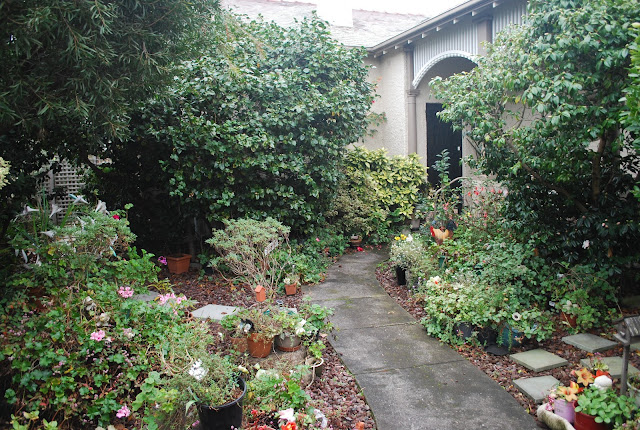My final house/garden. This is another one that I visited last Spring, when it was in its peak bloom. The garden looked simply stunning and it was most importantly unique. It has a combination of the overgrown and natural and the planned and focused. That is why I loved it so much, it was different, yet purposeful. In Spring I spoke to the wife, Ruth, who discussed much of the garden with me. This time around it was the husband, Peter who took the time to answer my questions. Unfortunately I could not find my Spring photos, but it's clear in my mind how different the garden has become since then. Now before I keep commentating on the garden, here are some context photos:
I think one of my favourite features of this garden is the use of Alyssum. As you can probably tell if you have read my other posts, I really do love this plant, but what's great here is how the Alyssum has naturally spread. Peter explained that whilst it is cutback sometimes, it is mostly left alone, which is great. I think a couple more of these type of 'wildflower' style flowers would really bring a fullness to this garden. Perhaps some larger wildflower style plants, such as Foxglove and Lavender or some bush Roses would add to this garden in that way. However, as I have said the garden has been done generally really well and as I noticed, what was a large and dominating Olive has now been replaced by a variegated Agonis which is a great choice, as the texture and colours of the smaller Agonis will blend the rest of the plants (especially the remaining Olive) really well together.
After a couple more minutes discussion with Peter, I found that I couldn't really offer any advice to him and his wife. As Peter told me, the garden was more of a process and an ever-changing space. I could easily tell that their garden management was more of an enjoyable challenge and hobby, rather than just a duty to giving the house a good front look. Here are some final photos of the garden that I feel really wrap it up.
It should be noted that there were - exemptions excluding of course - quite distinct differences between the houses and gardens of Hawthorn East and the Caulfield area. The houses and gardens of Hawthorn East were generally smaller in terms of land and more compact in their aesthetic designs. The gardens of Caulfield however, have much more space allotted to them. I think this was due to the eras and intent in which the suburbs were created. Caulfield has more space as it is based further from the city and that can be clearly seen in both garden and house design. Also, interestingly, the Hawthorn East gardens typically adopted a more British and cottage style look, whilst Caulfield had far less of that theme. I'd imagine this was more based on the heritage of the area, as one lady told me "Hawthorn East is an old and proper suburb and it's important that the gardens are correct in that look". I think she was referring to the picket fenced standard roses and the general crowdedness of the 'traditional' British garden.
Anyway, I am rambling. I hope you enjoyed my journey through these two suburbs!























































